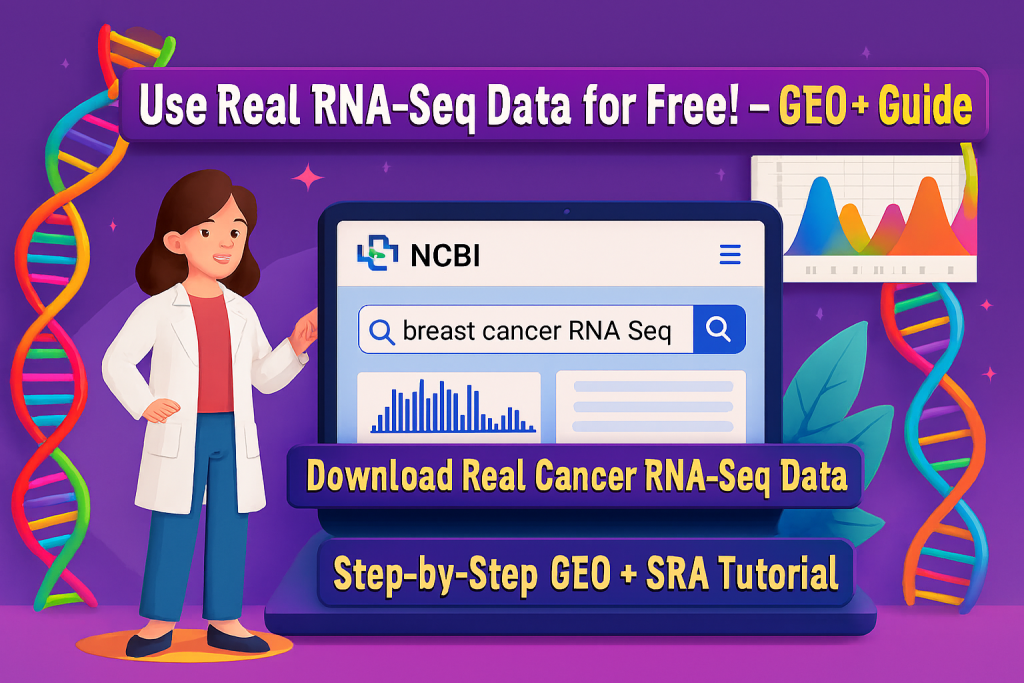
If you’re a biotech student or researcher, you’ve probably heard about RNA-Seq datasets from GEO, SRA, or the UCSC Genome Browser.
But when you actually visit these sites, it can feel… overwhelming.
The truth?
It’s not that hard — once someone shows you the path.
Here’s your step-by-step roadmap to start working with real cancer RNA-Seq data.
Step 1: Start with GEO (Gene Expression Omnibus)
Think of GEO as a public library of gene expression data shared by scientists around the world.
🔗 Visit: https://www.ncbi.nlm.nih.gov/geo/
In the search bar, try keywords like:
breast cancer RNA-Seqlung cancer transcriptomics
You’ll see a list of studies — each one containing datasets you can explore and download.
Step 2: Locate the SRA ID
When you open a study, scroll down to Data Access.
Look for an entry like:
SRA: SRR1234567
This SRA ID is your key to the raw sequencing data in the Sequence Read Archive (SRA) — the home of FASTQ files.
Step 3: Download the Raw Data
With the SRA Toolkit, you can grab those FASTQ files directly.
Example command:
fasterq-dump SRR1234567✅ These are the raw reads — the same format you’d get from a sequencing machine in a wet lab.
💡 Pro Tip: Start with one dataset before trying to master every tool.
Step 4: Visualize in UCSC Genome Browser
The UCSC Genome Browser is like Google Maps for your genome.
🔗 Visit: https://genome.ucsc.edu/
Upload processed files (like BAM or BED) to visually explore where genes are expressed — an essential step for understanding cancer transcriptomics.
Bonus: No-Install Options for Beginners
If downloading and installing tools feels intimidating, try these:
Galaxy Project – Drag-and-drop interface, no coding required.
Google Colab – Run analysis scripts directly in the cloud, for free.
Both allow you to align reads, trim sequences, and even run differential gene expression without setting up your own computer.
🎯 Final Thoughts
Public RNA-Seq datasets are a goldmine for biotech students — you just need to know where to look and how to start.
Follow these steps, and you’ll be analyzing real cancer data in no time.
